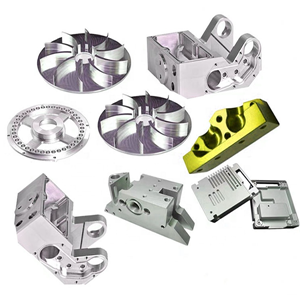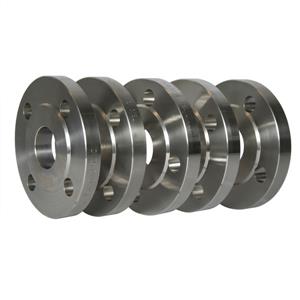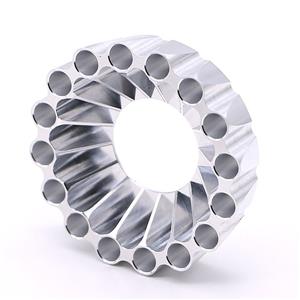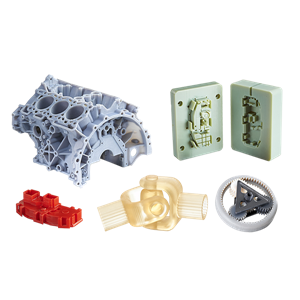Several common domestic processing methods
In some cases, the prototype is called the first edition. As the name implies, before large-scale production, a small number of samples are generally made based on product appearance drawings and structural drawings, which are used to check the appearance or structural rationality of the product. So which industries are precision users of Shouban factories or Shouban companies? Using the big data tool of the webmaster's house, we searched for the keyword "shouban" and found that the demand is relatively strong in the automotive, household appliances, electrical appliances, toys, medical equipment, technology and other industries. For the production of prototypes and rapid molds for these industries, the commonly used methods in China are: CNC machining, SLA, SLS, SLM, FDM, vacuum complex mold, low pressure infusion, sheet metal production. We will define, use materials, use software, and process Comparing these types of handboard processing methods on parts, advantages and disadvantages.
1. CNC machining
CNC machining is a computer numerical control machine tool, which is formed by cutting a whole plate by controlling the tool path according to a programmed program. It is currently the most widely used hand-board manufacturing method in China. The operation method is complex and requires the operator to have rich experience. It is mainly used in the processing of plastic and metal plates. It can be cut on all plates in the market. It is a material reduction technology. It can only process rounded corners with a certain degree of curvature, but cannot directly process inner right angles. Cutting / sparking and other processes to achieve.
2.SLA
SLA is a three-dimensional photocuring molding method, a kind of 3D printing technology. The materials used are mostly resins. Ultraviolet lasers with specific wavelengths and strengths are focused on the surface of the photosensitive resin to cure them layer by layer. The layers are layered to form a three-dimensional entity. . All 3D printing is an additive technology, from 0 to 1. SLA is the earliest rapid prototyping manufacturing process with high maturity. It is directly prototyped from the CAD digital model. The processing speed is fast and the product production cycle is short. Without cutting tools and molds, it can process complex structural shapes or difficult to form using traditional means. Prototypes and molds. SLA equipment is expensive and has high requirements on the factory environment. The strength, rigidity and heat resistance of the mold after molding are limited, which is not conducive to long-term storage.
3.SLS
SLS is selective laser melting, a kind of 3D printing technology, and the current mature process materials are wax powder and plastic powder. When printing, the laser beam selectively sinters the tiled powder. One layer completes the powder box descending, and then lays a layer of powder laser sintering. All sintering takes out the powder box to remove the excess powder, and you can get a sintered part. . The SLS hand-board mold has high strength and good toughness. It can be used to make bearings, gears, precision components, and electronic components. Because it does not require support, the material utilization rate is high; but it is polluted during the hand-board processing process; the speed is relatively slow .
4.SLM
SLM, the selected area laser melting molding technology, is currently the most common technology in metal 3D printing molding. It uses a fine-focus light spot to quickly melt the pre-set metal powder to directly obtain parts of any shape and with complete metallurgical integration. 99% or more. In the process of making SLM molds, because the parts are usually more complicated, support materials need to be printed, the support needs to be removed after the parts are completed, and the surface of the parts needs to be processed, so the production time will be longer and the cost is higher.
5.FDM
FDM is a fusion forming method. The material of FDM is generally a thermoplastic material, such as wax, ABS, nylon, etc., which is fed in a filament form. The material is heated and melted in the nozzle. The nozzle moves along the part profile and filling trajectory, and at the same time extrudes the molten material, the material quickly solidifies and condenses with the surrounding material. In the process of making hand-board molds by FDM, the price is relatively low, the materials are safe and harmless, and there is no mold fee. You can make a variety of colors, but you cannot print hollow products. After the FDM process, the hand mold has obvious stripes, and the molding accuracy is relatively low. It is necessary to design and manufacture the support structure and the molding time is longer.
6. Vacuum complex mold
Vacuum re-moulding is to use product prototypes (such as SLA or hand-board processing) to make silicone molds in a vacuum state, and use PU materials for pouring in a vacuum state, thereby cloning the same copy as the product prototype. Vacuum lamination is currently the most commonly used copying technology in the world; the technology can be applied to change the material of product prototypes, assemble prototypes, or carry out small batch production of products to meet performance testing, market promotion and delivery during product development. Inspection, approval and other requirements; using different PU materials can replicate rubber parts, transparent parts, high temperature resistant parts, etc. Common PU materials are brittle, toughness and high temperature resistance are relatively poor.
7. Low pressure perfusion
Low-pressure infusion, also known as low-pressure reaction injection molding, is a new process applied to the production of rapid molded products. It mixes two-component polyurethane materials into a rapid mold under normal temperature and low pressure environment, through the polymerization and delivery of the material. Chemical and physical processes such as bonding and curing form products. The low-pressure perfusion generation hand-plate mold has the advantages of high efficiency, short production cycle, simple process and low cost. It is suitable for small batch trial production in product development, as well as small-volume production, simpler structure covering parts and large thick walls and not Production of products with uniform wall thickness.
8. Sheet metal production
Sheet metal production is the processing of metal plates such as steel plates, aluminum plates, copper plates, including laser cutting, stamping, bending, etc. The significant feature of the raw materials for sheet metal processing is the same thickness of the same part.




